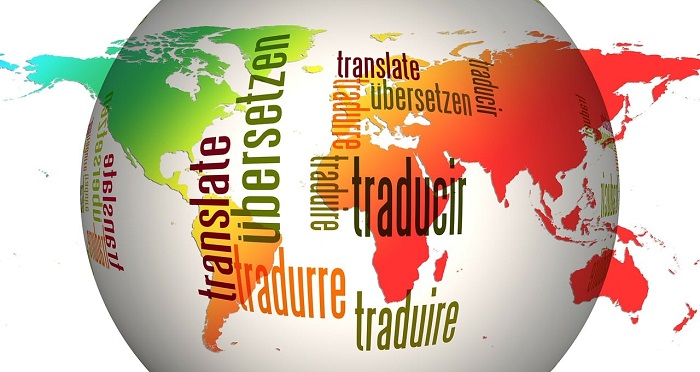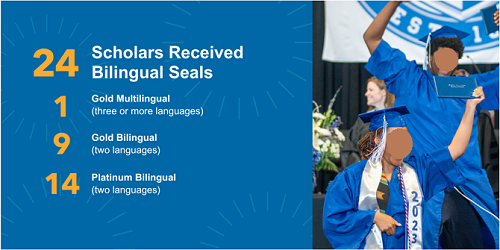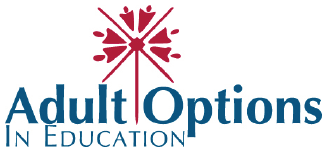- MN ABE Connect
- Archive
- The Multilingual Link
 June 9, 2023
June 9, 2023
The Multilingual Link
Jitka Sebek, AOIE Instructor For decades, Adult Basic Education/ESL students followed class protocol of strictly using the English language, their new language. With much supportive research, students and their teachers are now encouraged to honor and harness their students’ first languages (L1) as it helps their English language acquisition, their acculturation, and their connection with their own families and children. This multilingual link is a key connection in ABE/ESL – K-12 education, referred to as Home Language.
For decades, Adult Basic Education/ESL students followed class protocol of strictly using the English language, their new language. With much supportive research, students and their teachers are now encouraged to honor and harness their students’ first languages (L1) as it helps their English language acquisition, their acculturation, and their connection with their own families and children. This multilingual link is a key connection in ABE/ESL – K-12 education, referred to as Home Language.
Naturally, adult English learners use their L1 as the base for further language learning. They translate words and sentences using Google Translate or closed captions in Google Meet. Their L1 is their main tool to acquire English, and translanguaging is one of many mechanisms used to make sense of one content represented by L1 and the new language.
 For example, by translating the word ‘judge’ as ‘garsoore’, Somali students instantly understand the entire meaning behind the newly learned English word. Also, while acquiring English language, multilingual adult learners possess a better insight into syntax and morphology: with every learning experience, they metacognitively process the system of verb tenses or singular/plural forms of nouns as they reflect upon their L1. By reading in any language, adult students actively support their literacy in all languages.
For example, by translating the word ‘judge’ as ‘garsoore’, Somali students instantly understand the entire meaning behind the newly learned English word. Also, while acquiring English language, multilingual adult learners possess a better insight into syntax and morphology: with every learning experience, they metacognitively process the system of verb tenses or singular/plural forms of nouns as they reflect upon their L1. By reading in any language, adult students actively support their literacy in all languages.
During their process of acculturation, our international ABE/ESL students reach different levels of acceptance in their new communities, with the most optimal being integration. However, some students only experience assimilation, separation, and marginalization, which usually happens when English learners feel isolated, not understood nor accepted.
By inserting different forms of multilingual and multicultural opportunities into daily instructions, ABE/ESL teachers can provide samples of inclusion that reflect the wider community. This can be practiced in multiple ways, for example:
- displaying students’ written reflections on home countries
- emphasizing the importance of their previous education and work experience
- intentionally integrating exercises with regular opportunities for multilingual explication

Teachers are language brokers: we have access to the knowledge, skills, and languages of school. We serve as mediators and culturally responsive educators (WIDA). The validation of cultures and languages is already well reflected by the growing number of immersion schools, heritage weekend schools and the Seal of Biliteracy that is presented to students who are fully proficient in English as well as any other language.
ABE/ESL students may also have children who attend K-12 classes with the same culturally responsive teaching approach. We might be surprised by how many families are being educated in both levels of the school system; in multilingual unity is strength.
K-12 education does not necessarily offer an ample selection of world language classes, particularly less commonly taught languages, yet ought to support L1s in a variety of other ways. Our schools welcome students from all parts of the world and proudly count how many languages are spoken in their students’ communities. A high number of students enter K-12 schools already knowing their L1. Throughout the school years, do we help them add English or do we replace the L1 by the English language? Would that be called de-educating?
Our ABE/ESL students are not only our adult partners in their education but also the multilingual experts. They represent the families’ heritage assets; they nurture the home language and cultural traditions and benefit from our professional support. They take the lead while we, the teachers, utilize all we learn from multilingual workshops and culturally inclusive training.
By supporting our ABE/ESL students, we in turn support K-12 learners through their home languages using this connecting link to close the language learning circle.
Resources:
Problematizing linguistic integration of migrants: the role of translanguaging and language teachers:
https://www.degruyter.com/document/doi/10.1515/9783110477498-005/html?lang=en
More on translanguaging from the ATLAS Cultural Competency library:
https://atlasabe.org/resources/cultural-competency/antiracism-in-abe/antiracist-instruction/translanguaging/
WIDA eLearning:
https://wida.wisc.edu/grow/us-based-pl/elearning
If you want your children to succeed, then Hold On to your Home Language!
https://www.mylanguage.ca/resources.html
Share 8 Great Reading Tips with Families (in 16 languages):
https://www.colorincolorado.org/language-and-literacy-home-tips-multilingual

Newsletter Signup
Get MN ABE Connect—the official source for ABE events, activities, and resources!
Sign UpArticle Categories
- ABE Foundations/Staff Onboarding
- ACES/Transitions
- Adult Career Pathways
- Assessment
- CCR Standards
- Citizenship
- COVID-19
- Cultural Competency
- Digital Literacy/Northstar
- Disabilities
- Distance Learning/Education
- ELA
- Equity/Inclusion
- ESL
- HSE/Adult Diploma
- Listening
- Math/Numeracy
- Mental Health
- Minnesota ABE
- One-Room Schoolhouse/Multilevel
- Professional Development
- Program Management
- Reading
- Remote Instruction
- Science
- Social Studies
- Speaking/Conversation
- Support Services
- Teaching Strategies
- Technology
- Uncategorized
- Volunteers/Tutors
- Writing